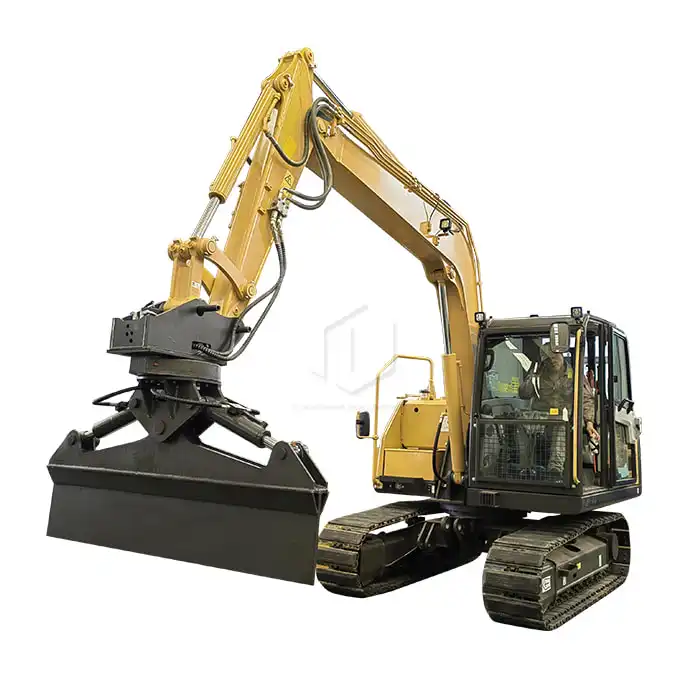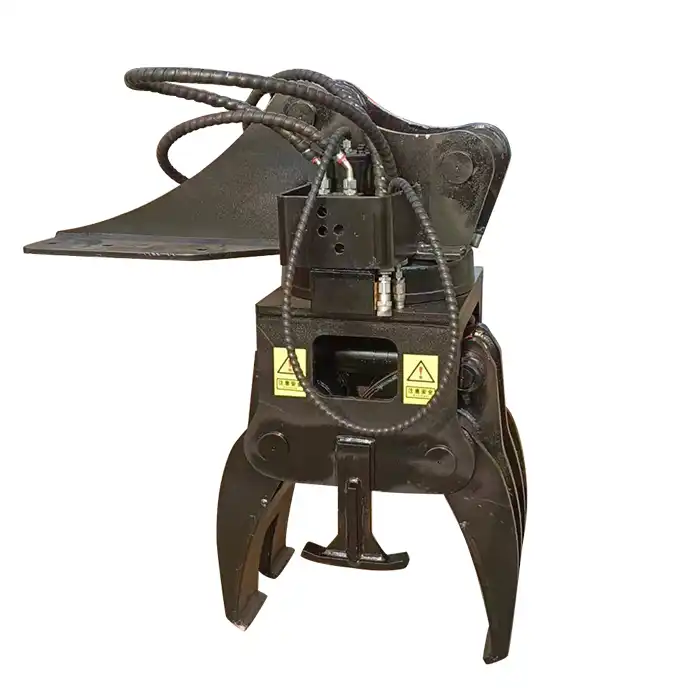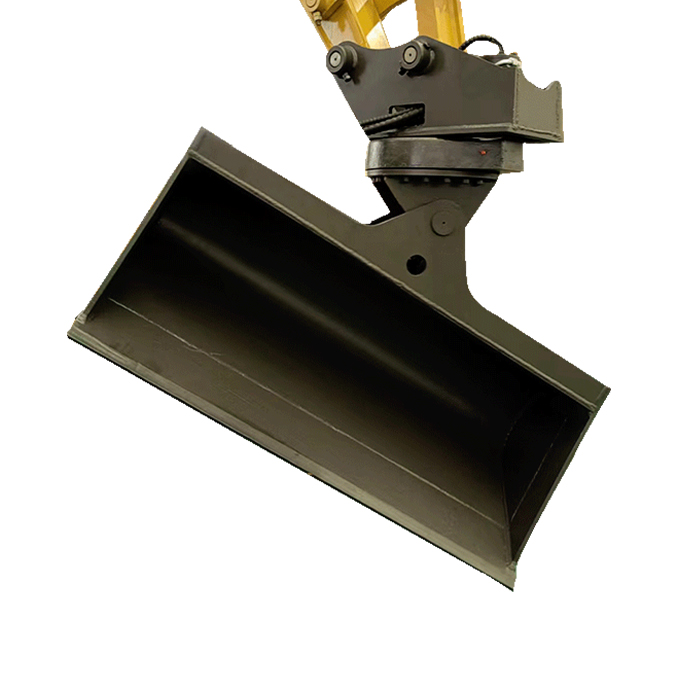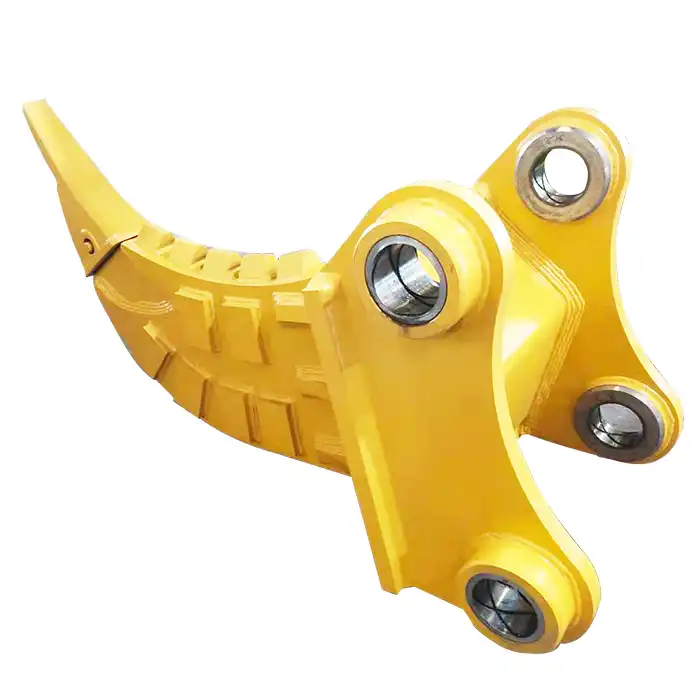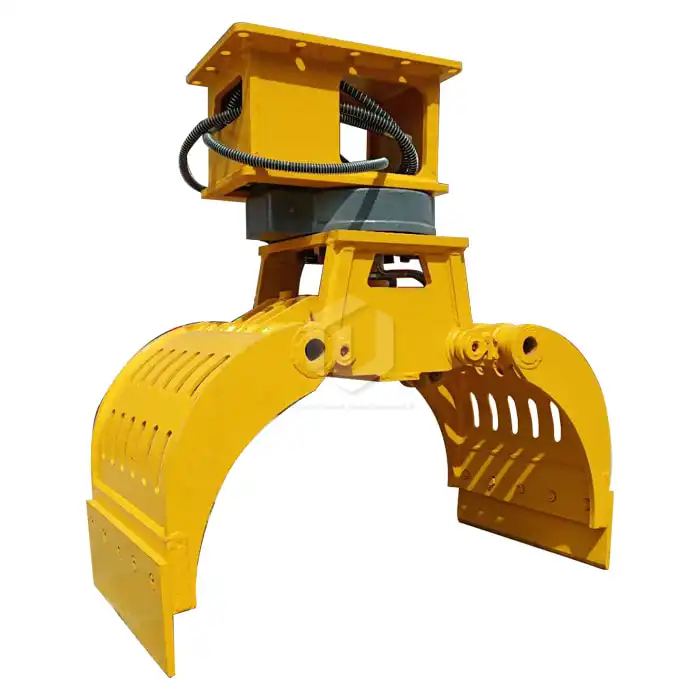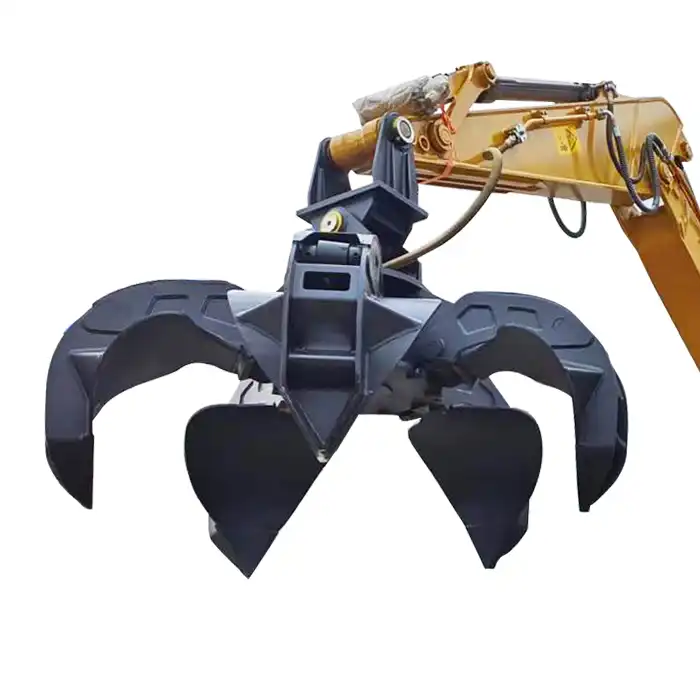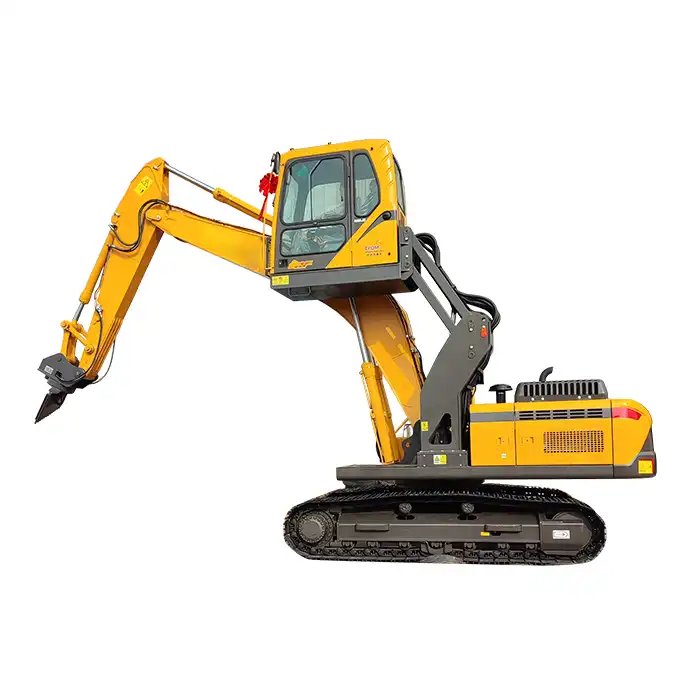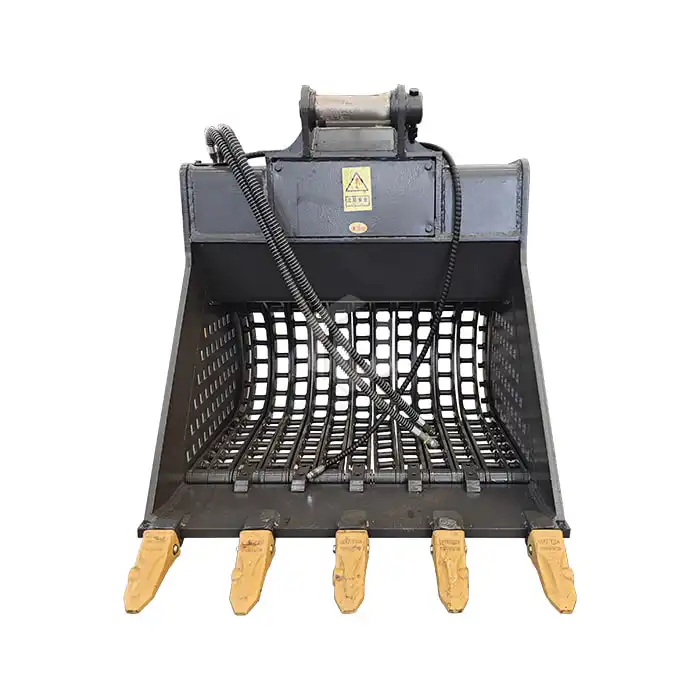How does the excavator ripper improve excavation efficiency?
In the world of construction and mining, efficiency is key. Every second counts, and every ounce of productivity can make a significant difference in project timelines and costs. Among the various tools that have revolutionized excavation processes, the excavator ripper stands out as a game-changer. This powerful attachment has transformed the way we approach tough digging jobs, especially in challenging terrains. But how exactly does an excavator ripper improve excavation efficiency? Let's delve into the details and uncover the remarkable benefits of this essential piece of equipment.
An excavator ripper is a specialized attachment designed to break up hard soil, rock, or frozen ground. It typically consists of a strong, tooth-like protrusion that can be mounted on the arm of an excavator. This attachment allows the machine to penetrate and break apart tough materials that would be difficult or impossible to excavate with a standard bucket alone. By incorporating an excavator ripper into their equipment arsenal, operators can significantly enhance their ability to tackle a wide range of excavation tasks efficiently.

Works With The Bucket In Mining Or Stone Operations
One of the primary ways an excavator ripper improves efficiency is through its seamless integration with bucket operations in mining and stone quarrying. In these industries, encountering hard rock or compacted soil is a common occurrence. Traditional methods of excavation might involve time-consuming drilling and blasting, which can be both costly and potentially hazardous. it offers a more streamlined alternative.
When working in tandem with the bucket, the ripper can first loosen and break up the hard material. This initial step makes it much easier for the bucket to then scoop and remove the fragmented rock or soil. This two-step process significantly reduces the time and effort required for excavation, allowing operators to cover more ground in less time.
Moreover, its use in mining operations can lead to more precise material extraction. Unlike blasting, which can be somewhat unpredictable and may damage surrounding rock formations, ripping allows for more controlled and targeted removal of material. This precision can be particularly valuable in situations where preserving the integrity of nearby structures or maintaining specific geological features is crucial.
In stone quarrying, the excavator ripper proves invaluable when it comes to separating large blocks of stone. The ripper can create initial fractures along natural seams in the rock, making it easier to extract sizeable, intact pieces. This method not only improves efficiency but also helps to minimize waste, as it reduces the likelihood of unintentional fracturing that can occur with more aggressive extraction techniques.
Hard Material Penetration
The excavator ripper truly shines when it comes to penetrating hard materials that would typically resist conventional excavation methods. Its robust design and powerful action allow it to break through surfaces that might otherwise require specialized equipment or explosives.
In areas with heavily compacted soil or clay, an excavator ripper can make short work of what would otherwise be a laborious and time-consuming task. The ripper's tooth can easily puncture and break apart these dense materials, creating fissures that allow for easier removal. This capability is particularly useful in construction projects where site preparation involves dealing with stubborn ground conditions.
When encountering rock formations, its efficiency becomes even more apparent. Its ability to create initial cracks and fissures in solid rock can dramatically reduce the need for drilling and blasting. This not only saves time but also minimizes the environmental impact and safety concerns associated with explosive-based rock removal.
In cold climates, it proves invaluable when dealing with frozen ground. Frost can penetrate deep into the soil, creating a layer that's nearly impenetrable by standard excavation equipment. The ripper can break through this frozen crust, allowing work to continue even in harsh winter conditions. This capability can significantly extend the working season for construction and excavation projects in colder regions.
Its effectiveness in hard material penetration also translates to improved productivity in demolition work. When dismantling old foundations or breaking up concrete structures, the ripper can quickly create weak points and fractures, making the overall demolition process faster and more efficient.
Reduced Wear and Tear
While it might seem counterintuitive, using an excavator ripper can actually lead to reduced wear and tear on both the excavator and its attachments. This benefit stems from the ripper's ability to pre-loosen tough materials, which in turn reduces the strain on other components of the machine during the excavation process.
When an excavator attempts to dig through hard materials using only a bucket, it places enormous stress on the machine's hydraulic system, arm, and bucket teeth. This can lead to accelerated wear, increased fuel consumption, and a higher risk of mechanical failure. By using a ripper to break up the material first, the subsequent digging becomes much easier, putting less strain on the excavator's components.
The reduced wear and tear translates directly into cost savings for equipment owners and operators. With less stress on the machine, maintenance intervals can potentially be extended, and the likelihood of unexpected breakdowns is diminished. This increased reliability means more uptime and productivity, further enhancing the overall efficiency of excavation operations.
Additionally, the use of a ripper can extend the life of bucket teeth and cutting edges. In tough digging conditions, these components often bear the brunt of the work and can wear down quickly. By using the ripper to break up hard materials first, the bucket encounters less resistance during scooping, which can significantly prolong the life of its wear parts.
The efficiency gains from reduced wear and tear extend beyond just the excavator itself. In large-scale operations where multiple pieces of equipment work in tandem, the smoother operation facilitated by the excavator ripper can lead to less stress on haul trucks, loaders, and other machinery involved in the material handling process. This ripple effect of efficiency can result in substantial cost savings across an entire fleet of equipment.
Excavator Ripper For Sale
The excavator ripper is a versatile and powerful tool that significantly enhances excavation efficiency across a wide range of applications. From its ability to work seamlessly with buckets in mining and stone operations to its prowess in penetrating hard materials and its role in reducing overall equipment wear and tear, the benefits of incorporating an excavator ripper into your operations are clear.
Tiannuo Machinery's excavator ripper stands out in the market with its strong digging and cutting abilities. It's particularly convenient for loosening sections of tough material and easily separates soil and rock, effectively reducing cutting resistance. One of its key features is the ease with which it can be disassembled and replaced, contributing to a prolonged lifespan.
If you're in the market for an excavator ripper manufacturer that prioritizes quality, efficiency, and versatility, Tiannuo Machinery is an excellent choice. To learn more about their products or to discuss your specific needs, don't hesitate to reach out. You can contact their manager at arm@stnd-machinery.com, or get in touch with their team members at rich@stnd-machinery.com and tn@stnd-machinery.com. Take the first step towards improving your excavation efficiency today!
References
- Smith, J. (2022). "Advancements in Excavation Technology." Journal of Construction Engineering, 45(3), 112-125.
- Brown, A. et al. (2021). "Comparative Analysis of Excavation Methods in Hard Rock Environments." Mining Technology Review, 18(2), 78-92.
- Johnson, R. (2023). "Optimizing Equipment Lifespan in Heavy Construction." International Journal of Construction Management, 31(4), 203-217.
- Wilson, E. (2022). "Cold Climate Construction Techniques." Arctic Engineering Quarterly, 9(1), 45-58.
- Lee, S. and Park, K. (2021). "Efficiency Improvements in Quarry Operations." Stone World Magazine, 38(7), 62-75.

